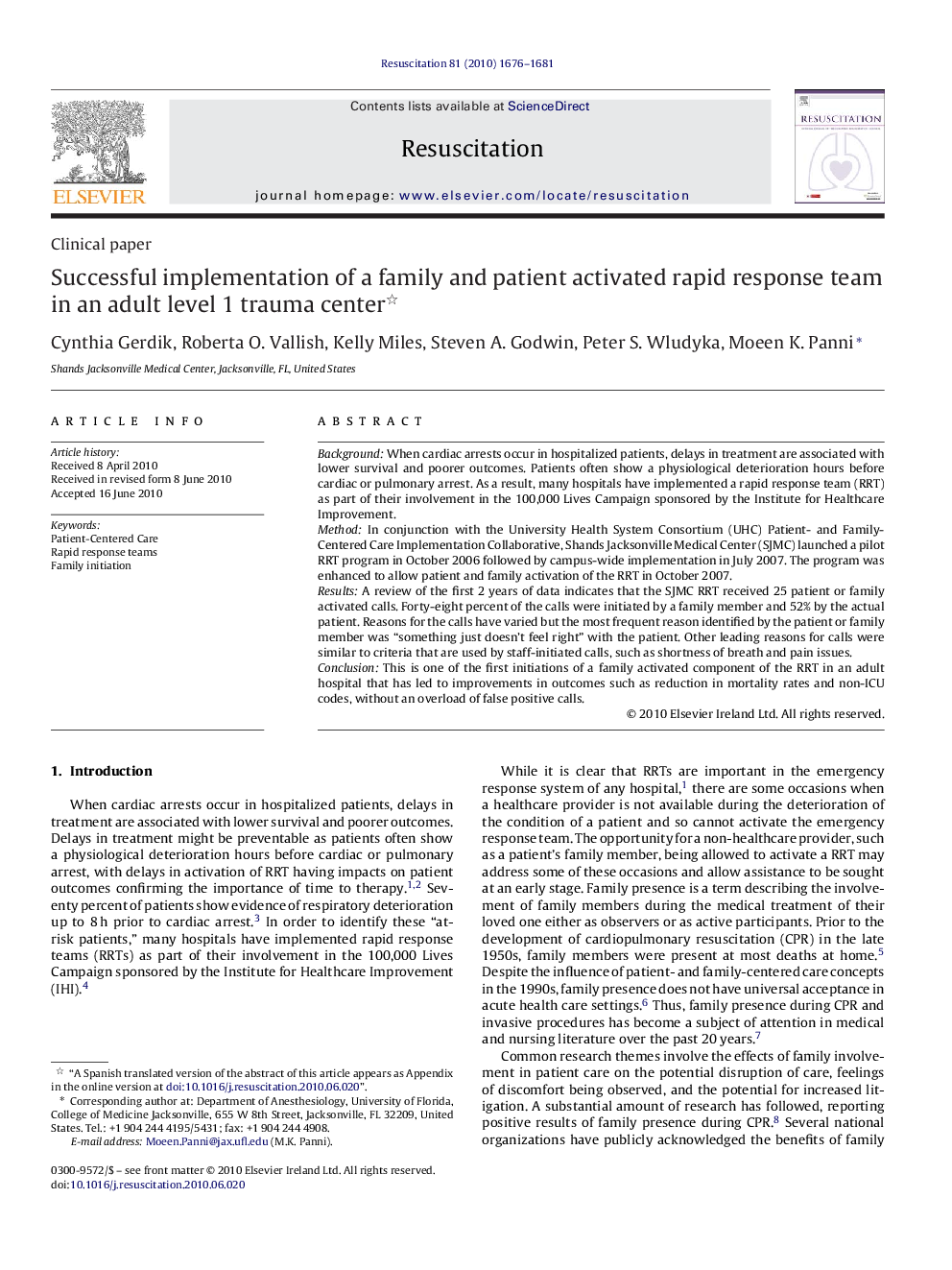| Article ID | Journal | Published Year | Pages | File Type |
|---|---|---|---|---|
| 3009412 | Resuscitation | 2010 | 6 Pages |
BackgroundWhen cardiac arrests occur in hospitalized patients, delays in treatment are associated with lower survival and poorer outcomes. Patients often show a physiological deterioration hours before cardiac or pulmonary arrest. As a result, many hospitals have implemented a rapid response team (RRT) as part of their involvement in the 100,000 Lives Campaign sponsored by the Institute for Healthcare Improvement.MethodIn conjunction with the University Health System Consortium (UHC) Patient- and Family-Centered Care Implementation Collaborative, Shands Jacksonville Medical Center (SJMC) launched a pilot RRT program in October 2006 followed by campus-wide implementation in July 2007. The program was enhanced to allow patient and family activation of the RRT in October 2007.ResultsA review of the first 2 years of data indicates that the SJMC RRT received 25 patient or family activated calls. Forty-eight percent of the calls were initiated by a family member and 52% by the actual patient. Reasons for the calls have varied but the most frequent reason identified by the patient or family member was “something just doesn’t feel right” with the patient. Other leading reasons for calls were similar to criteria that are used by staff-initiated calls, such as shortness of breath and pain issues.ConclusionThis is one of the first initiations of a family activated component of the RRT in an adult hospital that has led to improvements in outcomes such as reduction in mortality rates and non-ICU codes, without an overload of false positive calls.
